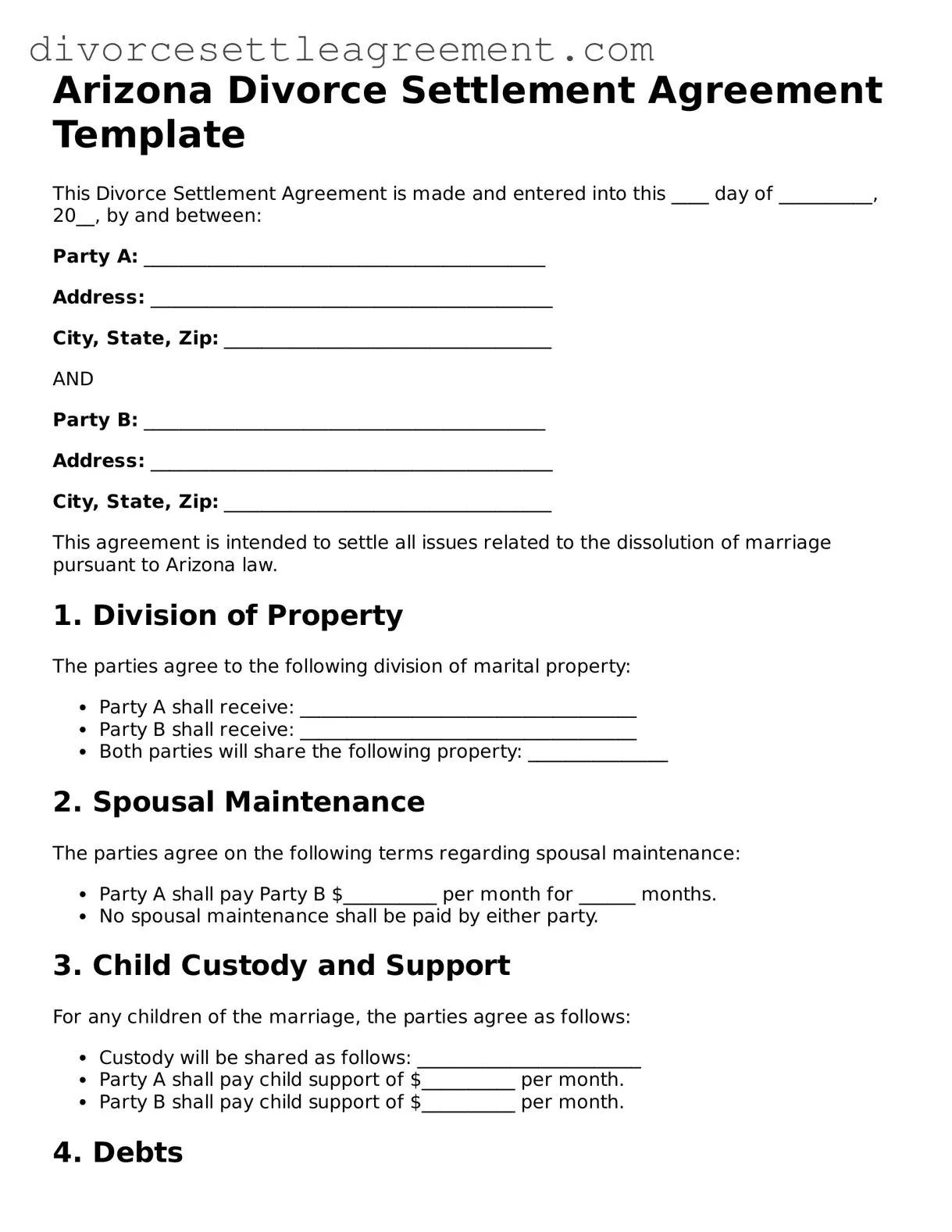Filling out the Arizona Divorce Settlement Agreement form requires careful attention to detail. One common mistake is failing to provide accurate personal information. Ensure that names, addresses, and other identifying details are correct. Any discrepancies can lead to delays or complications in the divorce process.
Another frequent error involves overlooking the division of assets and debts. Many individuals underestimate the importance of clearly outlining how property and financial obligations will be divided. It is crucial to list all assets and debts comprehensively to avoid future disputes.
People often neglect to consider tax implications when dividing assets. For example, retirement accounts and investments may have tax consequences that can affect the overall settlement. Consulting a financial advisor can help clarify these issues and ensure that both parties understand the long-term effects of their decisions.
Additionally, some individuals fail to address child custody and support arrangements adequately. It is essential to specify custody terms, visitation schedules, and financial support obligations. Ambiguities in these areas can lead to misunderstandings and conflicts down the road.
Another mistake is not including a clear dispute resolution process. In the event of disagreements in the future, having a predefined method for resolving disputes can save time and reduce stress. Consider including mediation or arbitration as options to handle potential conflicts.
Finally, many people forget to review the agreement thoroughly before submission. Errors or omissions can be costly. Taking the time to double-check all entries ensures that the agreement reflects the intentions of both parties and meets legal requirements.
